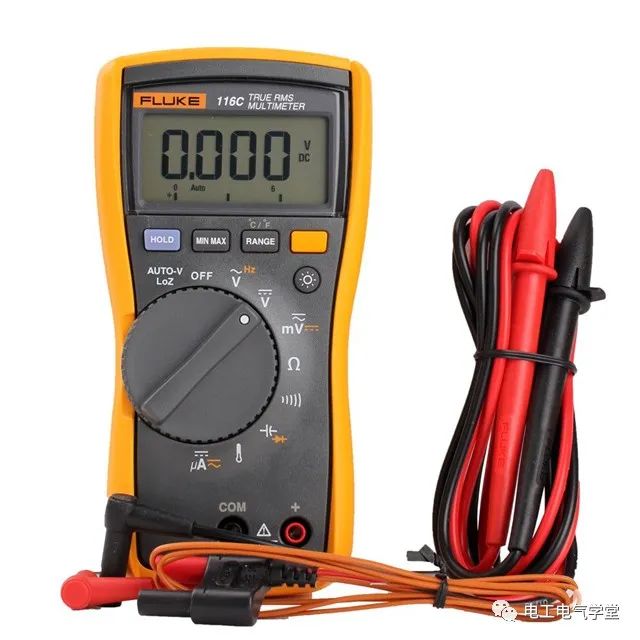When checking for short circuits, open circuits, or leakage in a circuit, we usually use a digital multimeter or an analog multimeter for testing in actual repairs. However, the principles of digital and analog multimeters are different, so there are slight differences in checking with an analog multimeter and a digital multimeter. Below, we will measure these three types of faults using both an analog multimeter and a digital multimeter.
Fault 1: Short Circuit

-
Using a Digital Multimeter
-
Check:
Range Selection: Resistance Range or Buzzer Mode
First, set the digital multimeter to the resistance range (select the smallest range; for a digital multimeter that automatically reads values, just set it to resistance range) or buzzer mode. Connect the multimeter probes to the component or circuit being tested. If the multimeter displays 0Ω, it indicates that this component or circuit is shorted. If the multimeter is set to buzzer mode and emits a “beep,” it indicates a short circuit; no “beep” means the circuit or component is not shorted.
-
Using an Analog Multimeter:

Range Selection: Resistance Range x1
Before using, we need to zero the analog multimeter, then connect the two probes of the analog multimeter to the component or circuit being tested. If the pointer of the analog multimeter deflects and points to 0, it proves that this component or circuit is shorted.
Fault 2: Open Circuit
-
Using a Digital Multimeter:
Range Selection: Resistance Range or Buzzer Mode
Again, we set the multimeter to the resistance range (select the maximum resistance range; for a digital multimeter that automatically reads values, just set it to resistance range) or buzzer mode. Connect the two probes of the multimeter to the component or circuit being tested. If the resistance range displays an infinite value, it indicates an open circuit. If there is no “beep” in buzzer mode, it indicates an open circuit.
-
Using an Analog Multimeter:
Range Selection: Resistance Range x10K
Before using the analog multimeter, we also need to zero it, then connect the two probes of the analog multimeter to the component or circuit being tested. If the pointer does not deflect, it indicates that this component or circuit is in an open circuit state.
Fault 3: Leakage
-
Using a Digital Multimeter:
Range Selection: Resistance Range or Voltage Range
When using a digital multimeter to measure whether a component or circuit is leaking, we can choose to use the resistance range for measurement without applying power. Set the multimeter to the resistance range; if the multimeter displays a certain resistance value, it indicates that this component may have leakage. When powered on, we can also set the multimeter to the voltage range (select the corresponding range based on whether the voltage being measured is AC or DC), connect the black probe to the neutral line, and the red probe to the component or circuit to be measured, observing whether the multimeter displays voltage. If voltage appears, it indicates leakage.
-
Using an Analog Multimeter:
Range Selection: Resistance Range or Voltage Range
When using an analog multimeter to measure whether a circuit or component is leaking, without applying power, we can select the resistance range. Before use, we still need to zero the analog multimeter (it is necessary to zero the multimeter when measuring resistance; otherwise, the measurement results will be inaccurate). When measuring resistance with the analog multimeter, if we find that the pointer deflects, it proves that this component or circuit has leakage. When powered on, we can use the voltage range for measurement, adjusting the voltage range of the multimeter to the corresponding AC or DC range based on the voltage type of the circuit or component being measured, connect the red probe to the neutral line, and the black probe to the component or circuit to be measured. If the pointer deflects, it indicates that there is leakage.
Summary: Measuring components for short circuits, leakage, or open circuits can be easily done with a multimeter. With practice, you can master this skill quickly. However, when performing household electrical repairs, it is essential to pay attention to safety to avoid electric shock.
Recommended (Click the blue text below to read)
The whole process of being caught stealing electricity, none can escape!
“Defaulting on electricity bills, stealing electricity, and violating electricity usage regulations” will be included in the dishonesty list! Promotions, loans, transportation, and other areas will be affected!
Latest “Electricity Payment” Guide without Going Out!
Fishing “Electric Shock Prevention” Safety Promotion Video, please inform all fishermen!
Why does the power suddenly go out at home, but the neighbor’s house has power? This is the best answer I’ve ever seen!
Scan the QR code below to follow us
You can receive our articles every day

↓↓↓ 99% of workers clicked “Read the Original”